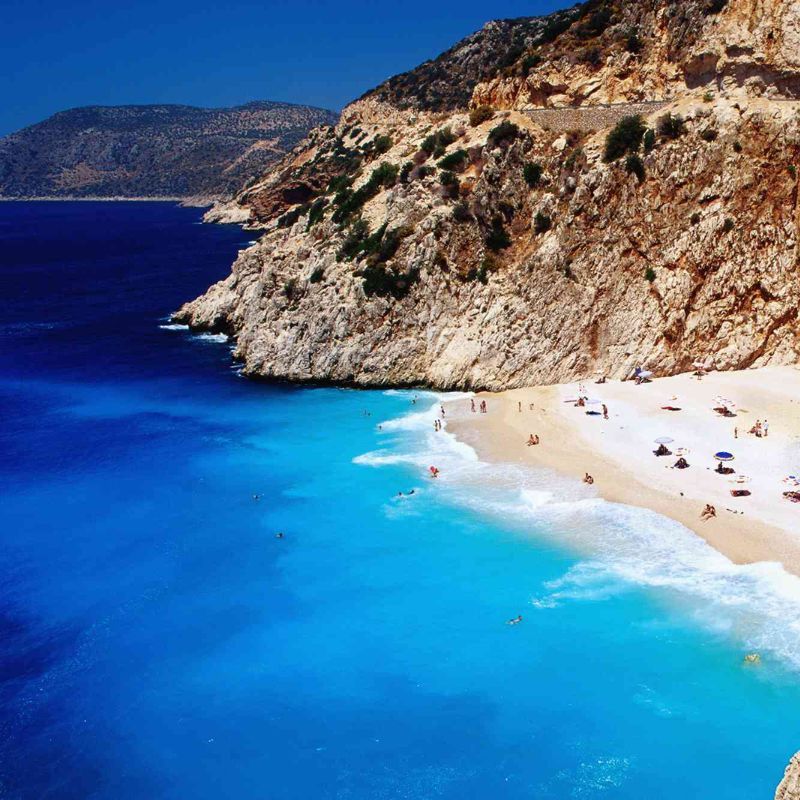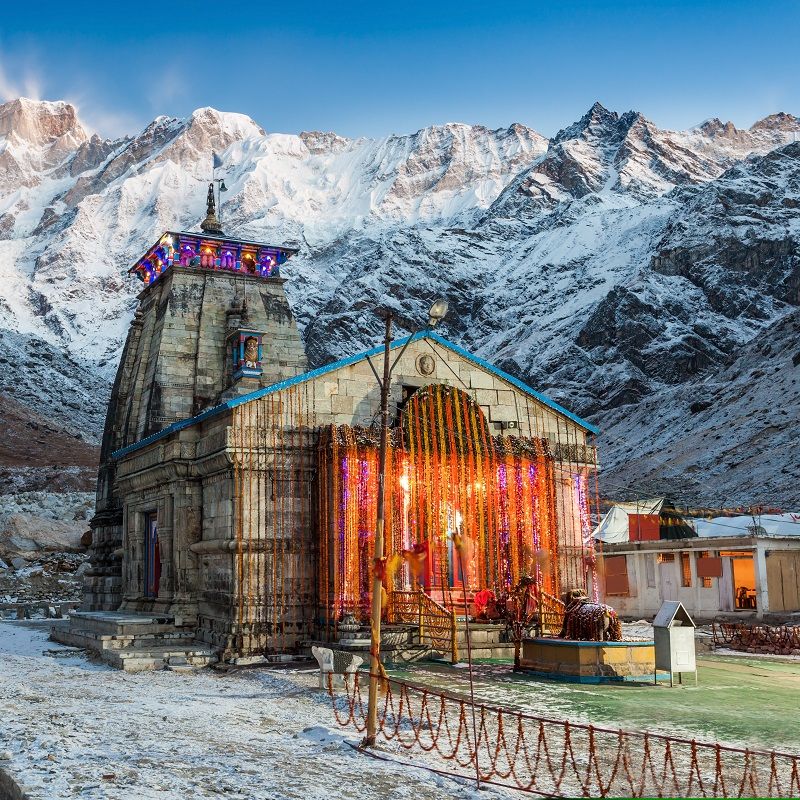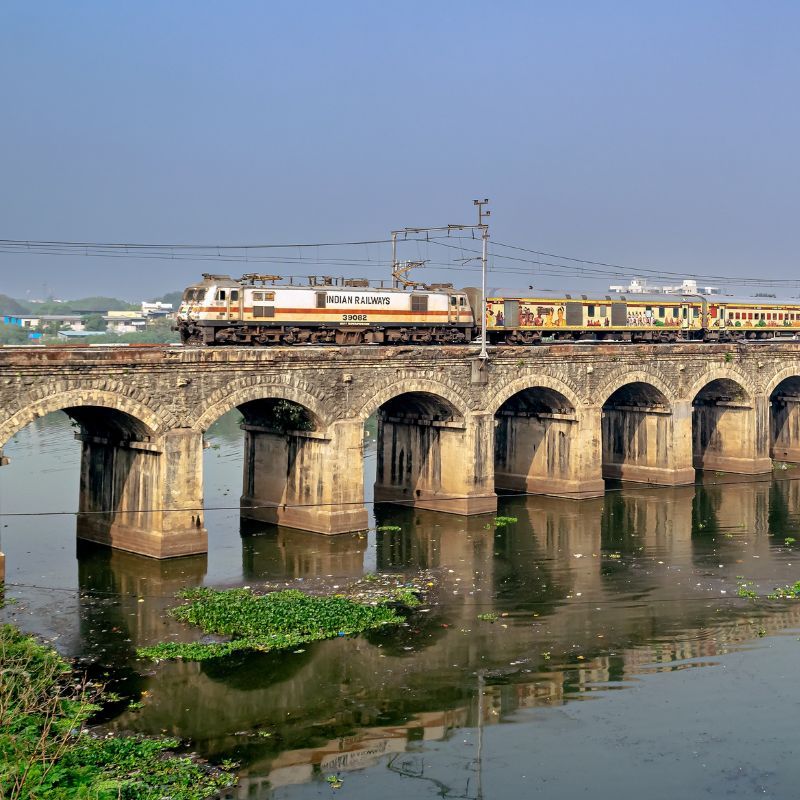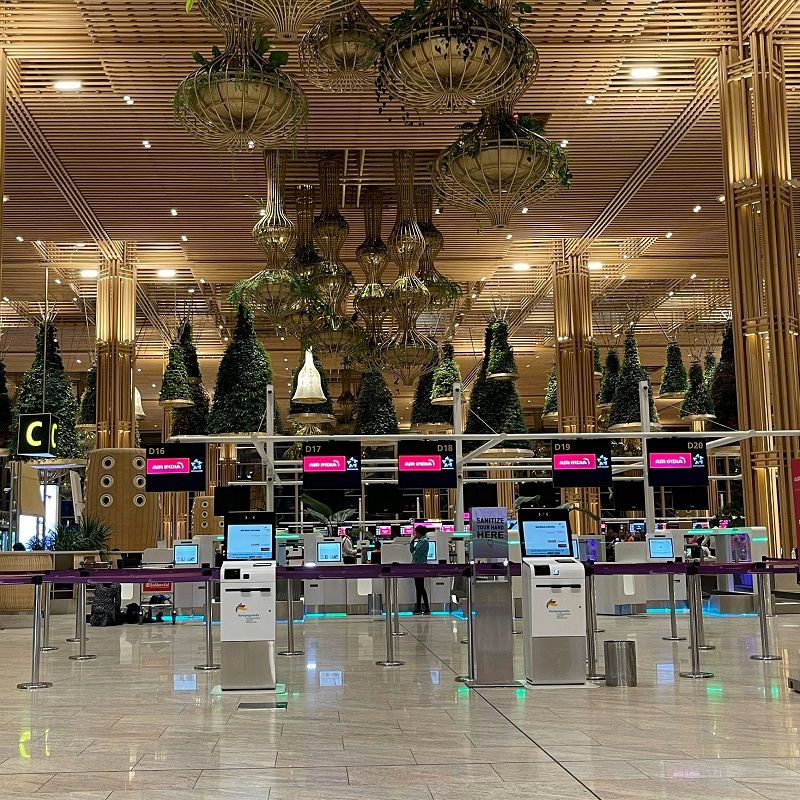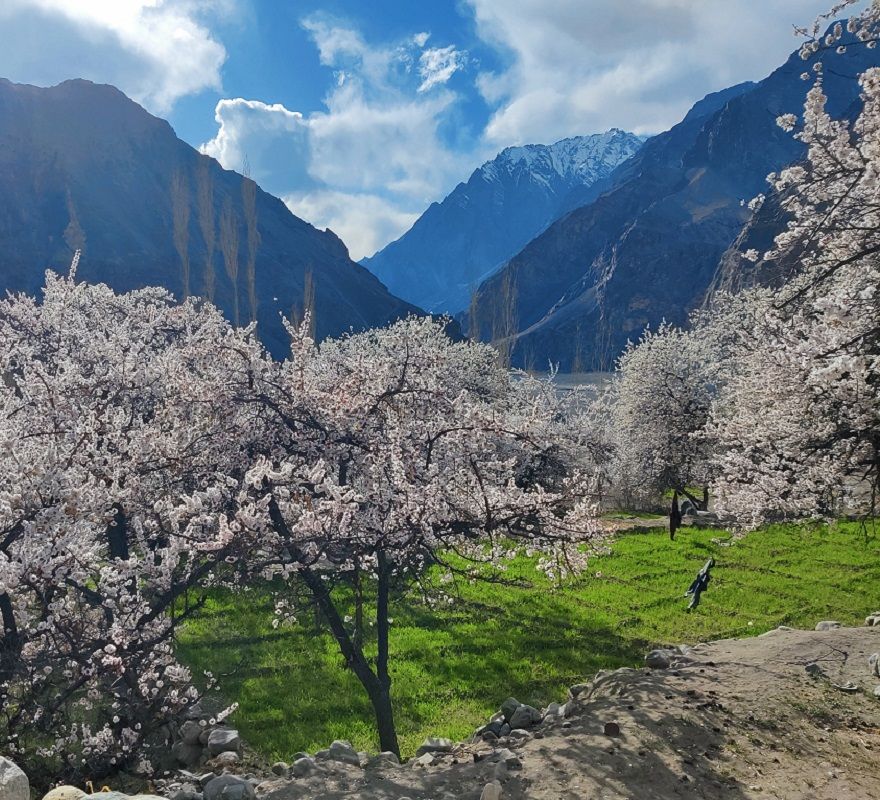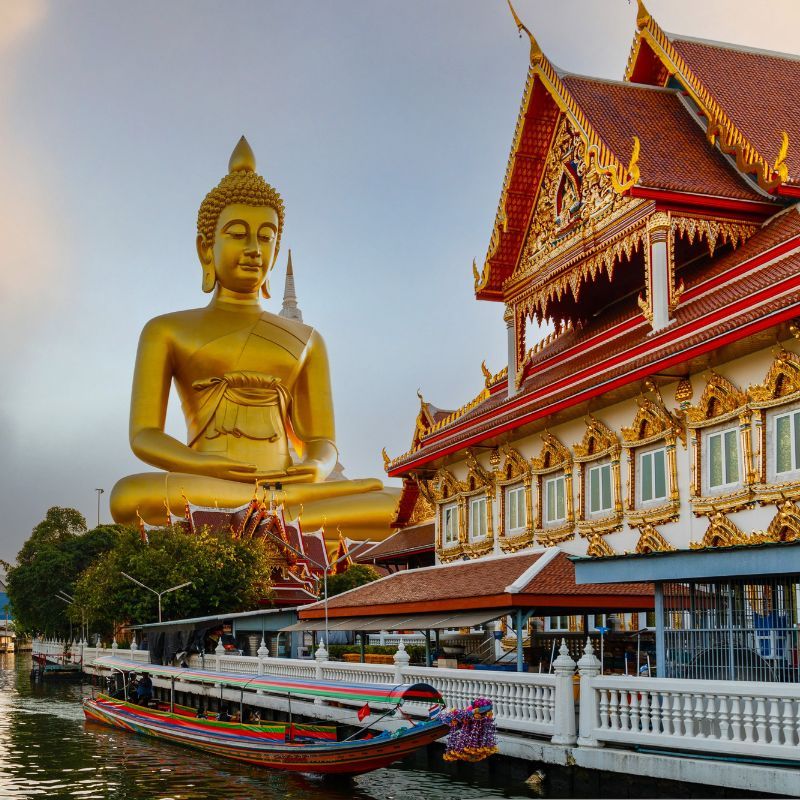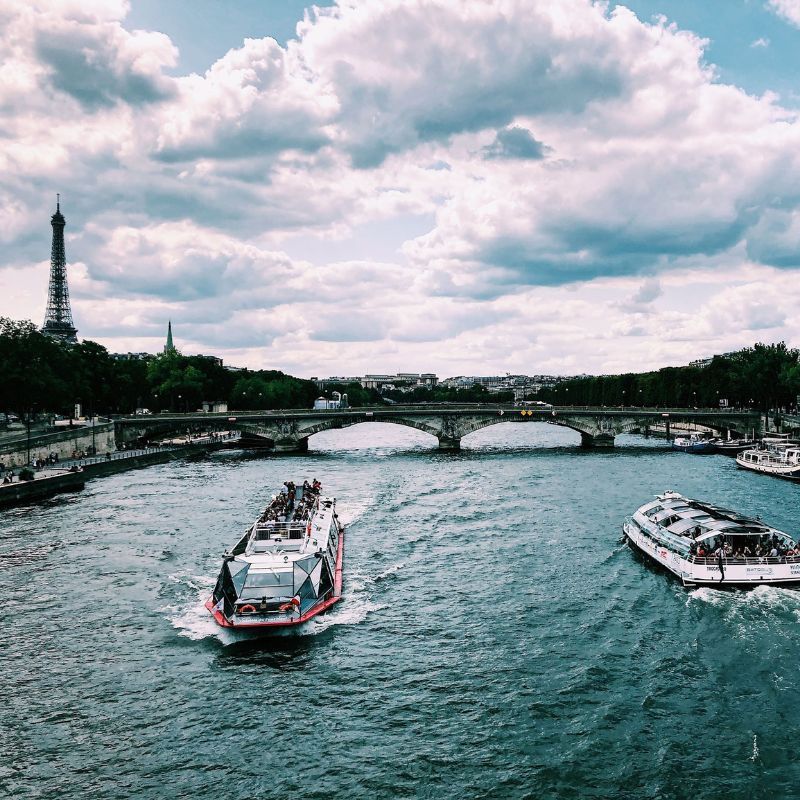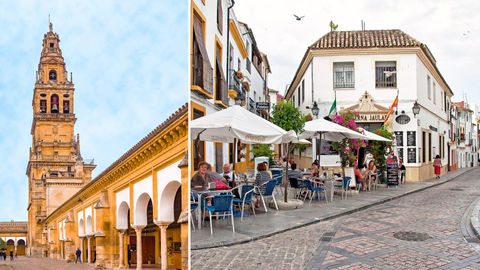
Established in the first century by the Romans, conquered in the eighth by the Moors, and re-conquered by the Catholics in the 13th, Córdoba has a rich, if volatile, past. Even today, 2,000 years after it was first established, Córdoba remains as enchanting as ever. By Anubhuti Krishna
One can hear the call of the muezzin, the gong of the cathedral bell, and the chant of the rabbi, almost all at once. The sweet scent of oranges wafts through tree-lined patios; gurgling fountains and chatting travellers make up a comforting din as the bright Spanish sun ricochets off intricate arches and golden walls. Córdoba’s historic centre is a leaf out of a Byzantine storybook, one where Roman bridges, Moorish towers, and hundreds of thousand-year-old buildings come together to create a mosaic of colours, textures, and design—each distinct yet fitting into the theme perfectly.

“Where in Córdoba would you like to go?” We were a bit lost when the English-speaking lady at the tourist desk of the railway station asked us. Like our other trips, we had arrived in Córdoba without a to-do list. So it helped that she had a map and a plan for us—take a bus to the old city, visit the important monuments there, and roam about the place the rest of the time.
And so, here we are, inside Córdoba’s old city, staring at its biggest draw—La Mezquita-Catedral de Córdoba.
A fragrant patio of orange trees is the first thing we notice inside the large complex. A fountain sprouts softly in the centre of the courtyard dotted by conical cypress trees. A tall bell tower, once a minaret, rises above the otherwise low building, and long horseshoe-arched corridors run along the perimeter. At one time, this courtyard was where devotees would clean up before heading inside for prayers. Today, we see travellers resting under the trees, kids playing in the stone patio, and birds bathing in the fountain.
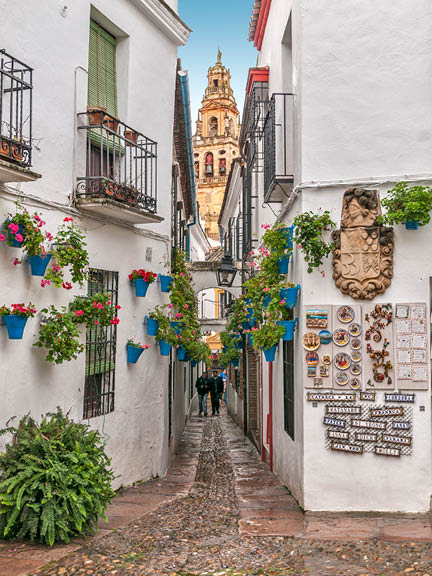
La Mezquita-Catedral, the mosque-cathedral, was built on the site of a Roman temple in the eighth century by Abd-al-Rahman I. Designed to be the most magnificent mosque of its time, the structure saw multiple expansions in the following centuries, and was finally converted into a cathedral after the Moors were chased out of Córdoba in the 13th century. The Patio de los Naranjos, where I stand now, is the result of one such expansion that happened in the 16th century.
The unending hall inside the Mezquita is dark and cool. It takes a while for the eyes to adjust to the darkness and for the brain to absorb the scale of the monument—for as far as the eye can see, there are arches and columns. Along the sides are multiple chapels, each more elaborate than the other, and then there are yet more arches and columns. The audio guide tells us that at one time, there were over 1,200 of these pillars inside the mosque cathedral, out of which 856 are still standing. Made with marble, granite, onyx, and jasper, the pillars are narrow at the shaft and spread out like palm trees on the top, a feature we have seen in other cathedrals of the region.

The mihrab, a gold-encrusted arch depicting the direction of Mecca, glows with golden mosaics of verses from the Quran on one side. The altar, the choir, and the intricately hand-painted roof of the main cathedral are right in the centre of the building. Hundreds of people walk bedazzled around these two main structures, audio guides stuck to their ears, eyes glued to the exquisite work, and legs trying to map the sheer size of the place.
A string of charming little shops welcome us when we step out of the Mezquita complex. Set along the periphery of the mosque-cathedral, some offer souvenirs and display local crafts, others whip up traditional sweets, and some others are cosy restaurants. Tourists throng to the shops closest to the exit, connoisseurs look for fine wines and fragrant oils, and the locals smile and offer discounts: “Only five euros for six magnets!”
When they set up their capital in Córdoba, the Moors not only brought their best masons to build incredible buildings, but also the finest of potters, painters, goldsmiths, jewellers, and, of course, musicians and dancers. While the royalty had to flee Córdoba after the Catholic reconquest, the craftsmen stayed back and made it one of the most culturally rich cities in Spain. Several generations later, the natives of Córdoba, many of them descendants of these craftsmen, continue to enchant visitors.

I fill my bags with magnets shaped like flamenco dancers, with tiny oil paintings that feature bright pink flowers, and with postcards that have better pictures of the cathedral than I can ever take. I also swoon over the intricate ceramics displayed outside many shops. My partner and I debate buying some, but eventually move on, thinking these pots and plates may just bring us back to the city some day.
The streets of Córdoba’s old town are unlike any others I have walked on. Narrow and inclined, they form a tight web around the Mezquita. Most are lined with homes turned into shops and cafes; some are private, and some so deep that I return midway worried I might get lost. They turn unexpectedly, meet others at odd angles, and often reveal hidden secrets, like the square with a sculpture of Moses Maimonides, a great Jewish thinker and philosopher who was born and worked in Córdoba. While these streets differ from one another in many ways, most have one thing in common: branches of pink bougainvillea hanging over stark white walls. Córdoba’s love for flowers is as legendary as its patios.
A unique architectural feature started by the Romans and taken over by the Moors, fl oral patios are small courtyards inside traditional Córdoban homes. Architecturally, they allow the buildings to stay cool; socially, they are spaces where locals can spend time with family and friends; and culturally, they are the most prized possessions of the Córdobans.

The two-week-long Patio Festival, Fiesta de los Patios, is an annual event celebrating these courtyards; it has ended just days before our visit. But the floral arrangements, we are told, are intact, and some private patios are still open to public. With no guide or group to follow, I am not sure where I can find the best patios. So I decide to ask.
“Come with us!” exclaims a middle-aged man, when I inquire at the corner shop about the famous patios, “we are all headed there!”
In a few minutes, we are on Calleja de las Flores, or the Alley of Flowers, a famous stop on the patio trail. The street is small and barely wide enough to accommodate two people. The walls along the passage seem to have been freshly painted and are decorated with dozens of deep blue flowerpots. Hanging at equal distance, they brim with bright red geraniums, hot pink carnations, green asparagus ferns, and mauve lavender. Blue and white ceramic tiles spell out the name of the street while the minaret of the cathedral peeps from a small gap. For a moment it seems like the picture from the postcard I have just bought has come alive.

Calleja de las Flores opens into a small square, where wrought-iron windows hang low and thick creepers fall from arches. Curvy calla lilies, red begonias, and hot-pink peonies fi ll up a dried fountain. Orange trees loaded with fresh fruit lend a soft citrus fragrance to the air. Now a part of the visiting group, we see many more streets and patios: some are decorated with mauve pennycresses, some with pots that burst with reds and pinks, some have hanging orchids adorning their arched gateways, and some have the good old bougainvillea climbing up disused wells.
While the historic centre of Córdoba is a UNESCO World Heritage Site, the residential areas just outside the old town are equally enchanting. They come with the advantage of no tourists or tourist traps. Walking by these quiet neighbourhoods, we witness the contemporary town and its people—locals going to work, walking children back from school, buying grocery, hanging out their laundry. The homes here are tall and narrow, the squares dotted with wispy jacaranda. We peep inside windows with billowing white lacy curtains, wave at elderly men reading newspapers, and wander into patios that seem to have been left open for tourists like us. We also pass through community squares with tiled benches and orange trees (they are everywhere!), Gothic churches with large windows, and small departmental stores selling mundane things. Life in Córdoba, as we see it, is slow and beautiful.
It is evening by the time we finally get to Córdoba’s oldest structure, Puente Romano, the 2,000-year-old Roman bridge over the Guadalquivir. It has been in use ever since it was built in the first century BC, and is said to have the best view of Córdoba, especially at sunset. Having seen the city in all its glory, I am in no mood to join the camera-trotting tourists lined up on the bridge. The fear of not getting another chance to do so, however, nags at me.

As I stand at the end of the bridge and look at Córdoba’s skyline glittering in the setting sun’s changing hues, it is not hard to imagine why every empire wanted to make Córdoba its own. At this point, I wish I could own a piece of Córdoba, too.
GETTING THERE
Córdoba is well connected to all the big cities of Spain. You can take a train or drive down from Madrid, Seville, or Malaga—all of which are connected to the major Indian cities. Air India flies direct to Madrid, from where Córdoba is an easy 2.5-hour train ride. Seville and Malaga are 1.5 hours away by train.
STAY
Hospes Palacio del Bailío once used to be a stately manor and retains its old-world charm. Located close to the old town, it offers easy access to important monuments like the Alcazar, La Judería, Jewish Synagogue, and the Mezquita. From INR 14,000. Balcon De Cordoba is a small hotel set in a 400-year-old building in the city centre. Every room comes with a balcony, which offers sweeping views of Córdoba’s skyline. From INR 12,000.
EAT
Córdoba’s streets are lined with numerous home-style restaurants and cafes serving Spanish classics and fine wines. Anchovies, olives, cod, tortillas, and breads make up the popular tapas. Bodegas Campos is an easy 10-minute walk from the Mezquita and serves wonderful Montilla wine apart from classic tapas. It is also known for its classics like rabo de toro (bull tail stew), salmorejo (tomato and bread soup), and flamenquín (batter fried jamón). Bodegas Mezquita is located right next to the Mezquita and serves a range of Arabic and Andalusian dishes. It has both set and à la carte menus, and the stews, chicken tagine, and lamb dishes are all highly recommended.
Related: This New Year, Discover The Surreal Arches At Playa de Las Catedrales In Spain


